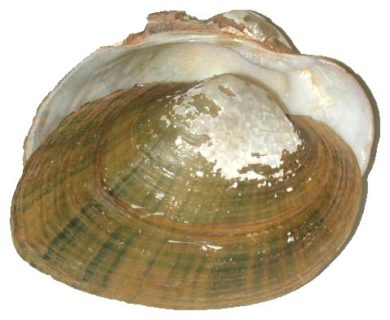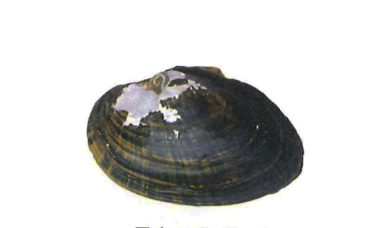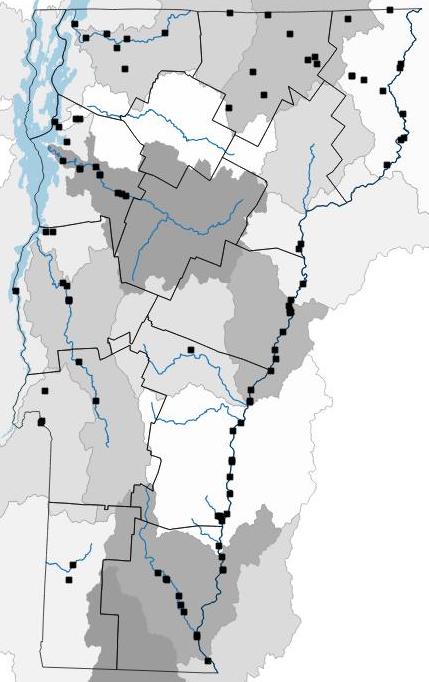
 Key Characteristics
Key Characteristics
- Size: up to 3 inches
- Shape: Variable and may appear triangular, elliptical, or ovate, and the ventral margin is rounded. Valves are somewhat inflated, with prominent beaks raised above the hinge line.
- Periostracum: Smooth and shiny, yellowish-green to black, with green shell rays.
- Lateral Teeth: Absent.
- Pseudocardinal Teeth: Triangular and prominent
- Nacre: The posterior section of the shell has a blue tinge, while the anterior half of the shell has white and pink tones.
- Similar Species: Dwarf Wedgemussel, Brook Floater, Creeper
Conservation Status
- State and Global Rank: S3 G4
- Vermont Wildlife Action Plan: not listed
- Vermont Endangered Species Law: not listed
- U.S. Endangered Species Act: not listed
- IUCN Red List: Least Concern
Habitat
The triangle floater prefers small, steady-flowing streams close to headwaters. It is sometimes found in lakes or ponds, and most often found in gravelly sand, mud, or between large stones.
Host Species
Common shiner, blacknose dace, longnose dace, pumpkinseed sunfish, fallfish, slimy sculpin, white perch, white sucker, largemouth bass
More information
- Encyclopedia of Life
- NatureServe
- Musselp
- New Hampshire species page and map
- iNaturalist species page
Range
Widespread.
Distribution map has locations where this species has been documented and digitized into the atlas database. Systematic surveys have not been conducted for many species and those surveys that have been conducted have been largely focused on endangered species. Therefore, in some cases, the actual distribution of freshwater mussels may be more extensive than what is presented here. Shaded areas are watershed sub-basins and river main stems are shown.







